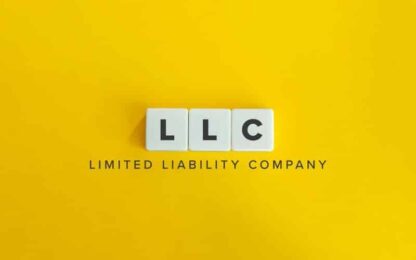How Do I Pay Myself from My LLC?
Being an LLC owner doesn’t mean that you are not entitled to be paid for your job. Once all entity-related formalities and hassles are settled, all licenses and permissions are obtained, the filing process is organized, and the day-to-day operation is tailored to certain rules, you want to know how you are going to pay yourself as an LLC for running the business and fulfilling specific functions in it.
All entrepreneurs ask themselves a question about their own remuneration sooner or later. And you’d better figure out your payment options as soon as possible since they depend on a number of factors and impact some aspects as well.
In our article, we will touch upon the owner payment options for different LLC scenarios, management, and operation models. We’ll do our best to get into every detail and reveal all the nuances you should know as well as to answer all questions that normally arise in relation to this part of private business.
Paying Myself From My LLC: the Options You Have
Quite often LLC owners choose to leave their incomes in the company to invest in further growth and development or maintain some specific internal initiatives and projects. However, knowing the options of paying yourself as an LLC will never go amiss. Let’s look into the three main alternatives you have.
Paying Yourself a Salary
It’s a great option for those LLC owners who play an active role in the management and ongoing operation of their entities. They have certain responsibilities and function pretty much the same as other hired company employees. In this case, you can determine the wages or salary you can rely on as compensation for the work you do.
In the structure of the LLC finances, the employee salaries are a part of operational expenses that are deductible from the profits to be taxed. However, the Internal Revenue Service (IRS) is very scrupulous about this issue and keeps an eye on the wages to align with the industry standards. In other words, you cannot pay yourself more than the average amount stipulated for the position you take. Otherwise, it might cause problems with the IRS.
As an employee, you’ll be exposed to employment and income taxes levied over your salary. All mandatory charges will be withheld from your final paycheck by the LLC.
Getting LLC Profit Distributions
As an LLC member, you own a share in the LLC equity and are entitled to receive a part of the LLC’s annual profit pro-rata to your contribution percentage. Thus, if you share an LLC with a single partner, you’ll get paid on a 50% to 50% basis.
Should there be more members in the LLC, the profit will be distributed in proportion to their equity shares accordingly. Note that distributions might vary, and the payable percentage can be individually defined for each member in an Operating Agreement.
Speaking of the payment schedule, you could receive your profit distribution as a one-time payment at the end of a financial year or split your expected distribution sum into equal payments across the year. Should there be any spread between the prospected and actual distribution amount, you’ll get the delta at the end of the year.
Noteworthy, company profit distributions are open to income tax payments and need to be reflected on your personal tax report for that purpose. At the same time, you are entitled to receiving a share in the company’s profit irrespective of receiving a salary from your LLC. These two options can be applied simultaneously.
Being Paid as a Contractor
If you provide some sort of services to your own company, you can get paid as a common contractor if you want. Remember, though, that you’ll have to pay a self-employment tax for this part of your income.
You’ll be obliged to apply the W9 Form to the IRS, and your LLC will have to submit Form 1099-MISC to the revenue service, which is normally issued to discern non-employee payments and track the vendor or subcontractor revenues.
How to Pay Myself From My LLC: Points to Consider
To understand how to pay yourself from your company taking into account the above-mentioned options you have, you should also understand some key features of your newly formed or to-be-formed entity. The aspects to take into account when pondering over your payment alternatives are as follows:
- LLC taxation: An LLC structure boasts impressive taxation flexibility and adaptivity. Such companies allow for different taxation scenarios to make tax payments less of a burden. At the same time, though, for the IRS, there is no such structure as LLC. By default, the service treats LLCs as disregarded entities that make use of pass-through taxation. However, you are also allowed to have your company taxed as a corporation. The chosen tax status restricts the payment options for company members as well as how those member profits are to be taxed and reported;
- The number of LLC members: The way you pay yourself as an LLC owner will also depend on the number of members in your future entity. The options for single- and multi-member LLCs are not the same;
- Ownership participation: This refers to multi-member LLCs only that are owned by two or more members. However, this point is by far the trickiest one since company profit distributions are usually paid proportionally to the ownership percentage. However, LLC ownership is not only about the monetary investment but also about non-monetary contributions or the so-called sweat equity when a member invests time and effort into starting an LLC and growing the business. For the sake of distributed profit payments, sweat equity should be referred to as a certain percentage equaled to monetary investment. That reference is to be made in an Operating Agreement upon the consent of all company members. It’s highly important to outline those points for the LLC members to be diligently paid on a fair and clear basis.
Now that you’ve learned the major aspects of how to pay yourself from an LLC, let’s get into algorithms of payment under different business and taxation scenarios to disclose the pitfalls and details pertinent to each situation.
How to Pay Yourself as a Single-Member LLC
As the name suggests, single-member LLCs are started and run by a single person who is a sole company owner. In the eyes of the IRS, single-member LLCs are similar to sole proprietorships. As a result, single-member LLCs are taxed as disregarded entities and your profit is treated like your own earnings and passes on to your personal tax return.
On the other hand, though you’ll pay an income tax over the LLC profit under your personal tax rate and on your individual tax report, you do not get paid the way sole proprietors are paid. Company earnings are not your salary by default.
Single-member LLC owners cannot be treated as company employees unless you choose a corporate status for your company. Hence, the only way to pay yourself in this situation is via the owner draw, i.e. by withdrawing money from your enterprise’s profit.
Since you are a sole business owner, it’s up to you to decide on the amount of that draw and the payments schedule. You can get money on a monthly or annual basis by simply transferring the funds from the company bank account to your personal account or writing yourself a payment check.
Tax Nuances for Single-Member LLCs
For default LLCs taxed as pass-through entities, owner draws are not withdrawable from the taxable company profits. The whole amount of the company earnings is transferred to the owner's tax return. The good about this scheme is that you don’t have to pay an individual income tax and avoid the burden of dual taxation since the IRS will only tax the business income under your tax report.
Likewise, since you are not considered an enterprise employee, there will be no payroll charges to cover. Yet, taxed as a disregarded entity and treated as a sole proprietor, you are considered self-employed and are open to a self-employment tax.
How to Pay Yourself as a Multi-Member LLC
Multi-member LLCs are owned by more than one member. Those members are treated as partners, and a company functions as a general partnership in the eyes of the IRS. So, again, pass-through taxation is applied to such LLCs unless they elect a corporate status.
Similar to single-member entities, this type of LLC offers payments to its members via owner draws or profit distributions. A member can claim either a monthly draw based on the estimated profit amount or an annual payment of the whole distributed profit that takes place at the end of the fiscal year. Guaranteed monthly payments allow members to get some stable money inflow across the year, no matter the company income in a certain month.
In general, each member is entitled to obtain part of the LLC’s earnings proportional to their equity investment or ownership share. In practice, though, you get much more flexibility in this concern. One of the biggest LLC benefits is that company owners can decide on the profit distribution as they deem necessary.
Profit distribution principles are among the key provisions covered by an Operating Agreement all LLCs are strongly recommended to have in place. It’s a document where, along with other crucial issues, you can stipulate your own rules for the LLC profit distribution and outline the way how the profit will be divided. Thus, the members who take active ongoing participation in business maintenance and operations can get appropriate compensation even if their LLC share is smaller or they have made no monetary investment in the company at all.
Tax Nuances for Multi-Member LLCs
Similar to single-member LLCs, multi-member companies are taxed as pass-through entities, and LLC incomes are taxed on the owners’ tax reports.
The company should report its incomes and expenses to be withdrawn from the taxable income to the IRS in a separate corporate form. Meanwhile, members are to pay taxes on their share in the LLC profit. At the same time, they don’t pay a personal income tax on that amount. So, it’s not taxed twice for them. Yet, multi-member LLC owners are regarded as self-employed and should pay self-employment taxes on their profit share.
How to Pay Yourself in a “Corporate” LLC
Taxed as disregarded entities by default, LLCs can choose to be taxed as corporations, which is yet another big point of attraction in this legal structure. And the best thing is that you can elect a corporate tax status for single-member and multi-member LLCs alike, without changing the entity type.
Members of LLCs that choose to be taxed as corporations are not entitled to take owner draws. Instead, they can get paid via salaries and profit distributions or dividends similar to shareholders.
Getting Payments From C-Corps
C-Corp status is selected by filing Form 8832 with the IRS. On the one hand, C-Corps incur a noticeable tax burden being exposed to a 21% corporate tax and double taxation by companies pay levies at corporate and shareholder levels alike.
On the other hand, a C-Corp structure is the most attractive for investors which makes it by far the best alternative for rapidly growing businesses. In the meantime, higher income taxes are balanced in a way by an overall higher level of tax deductions and deductible expenses.
Employee salaries belong to the type of costs that allow reducing taxable corporate profits. Thus, enterprises pay their members as employees by issuing payroll checks. This way, some part of the company's income passes on to the shareholders while payroll and FICA taxes are reserved for the company.
It should be noted that you can’t appoint yourself any salary you want. You should stick to a fair principle here and use an average reasonable salary appropriate for the position you take in the company. And you’ll have to pay a personal income tax on wages you receive.
Even when getting a salary as a hired employee, you can still take dividends that will add to your taxable personal income yet are free from payroll levies. Yet, avoid exploiting dividend payments to reduce taxes since it will bring IRS audits, increased regulatory control, and penalties.
Getting Payments From S-Corps
To acquire an S-Corp tax status for your LLC, you should apply Form 2553 to the IRS. This unique tax status combines the benefits of pass-through and corporate taxation. Similar to disregarded entities, S-Corporation’s incomes are taxed under the personal tax returns of the company owners, thus, eliminating the dual taxation burden. At the same time, S-Corps also allow for noticeable savings on FICA taxes when allocating dividends since profit distributions are free from payroll taxes.
In an S-Corp, you are paid pretty much the same way as in C-Corp. You can get wages as a hired employee when actively participating in the LLC operations as well as receive dividends on your equity share. Both payments will be treated as your taxable income.
The biggest plus of S-Corp tax status for an LLC is that you can balance expenses and optimize taxes under growing incomes. As such, this status is a great solution for single-member LLCs that has achieved a high level of income and seek to minimize taxes.
When paying yourself wages and dividends, you still need to be careful and stick to a “reasonable” compensation level to avert any problems with the IRS.
Final Thoughts
By and large, paying yourself as a company owner is easy. Default LLCs taxed as disregarded entities allow for direct payments via paychecks leaving payroll taxes at bay. In a fast-growing LLC taxed as a corporation, you have even more options to get paid. Putting a lot of time and effort into the company management and maintenance, you can obtain wages as a common employee while still remaining eligible for dividends from the business profits.
While it looks quite clear and straightforward, we still insist that you consult with a professional accountant or tax expert to choose the best taxation scheme for your entity and the best payment methods for yourself.





